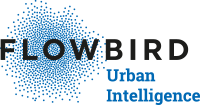Overview
Once an American manufacturing epicenter known for its smoke-billowed steel mills, the city of Pittsburgh has become one of the top innovation cities in America, positioning itself as the city of tomorrow.
 To date, the region’s per capita research and development (R&D) spending is nearly two and a half times the national average. After the turn of the millennium, Pittsburgh began investing in all of the typical ingredients of the modern American urban success story; a diverse and educated workforce, universities and research institutes, and restored neighborhoods. Leading in Pittsburgh’s innovative force was the Pittsburgh Parking Authority (PPA), a key player in the city’s striving economy.
To date, the region’s per capita research and development (R&D) spending is nearly two and a half times the national average. After the turn of the millennium, Pittsburgh began investing in all of the typical ingredients of the modern American urban success story; a diverse and educated workforce, universities and research institutes, and restored neighborhoods. Leading in Pittsburgh’s innovative force was the Pittsburgh Parking Authority (PPA), a key player in the city’s striving economy.
Taking lead from David Onorato, Executive Director of the Pittsburgh Parking Authority, the city was the first in the country to make the change to a Pay-by-Plate system in 2012. Within the next 5 years, the PPA would be named Parking Organization of the Year, becoming one of the first to be recognized as an Accredited Parking Organization and listed among the top 10 innovative parking cities in the U.S.
The Authority’s influential shift caught the attention of top cities around the world, all vying to know the secret of their path to success.
A Bold Move Forward
Up until 2012, Steel City was just that, a metropolis vast with steel, coin-operated single-space meters. The slow-paced meters had been a part of the city’s landscape for nearly 75 years and were becoming difficult to support.
David Onorato led the modernization for the Authority with a vision to improve the parking experience for all Pittsburgh patrons, for those on-street and off-street in busy lots. The first objective was to extend the option of paying by debit or credit cards to those who were limited to the use of coins to pay for parking.
“With the support of my I.T. Department, the decision was made that pay-by-plate was the way to go,” said Onorato, “We decided we were about to make a drastic change from the coin meters.” The Authority made the bold move to transition the meters with a vision of increasing revenue, capitalizing on new technologies, and improving the Authority’s efficiency, effectiveness, and transparency.
 In 2012, Pittsburgh became the first U.S. city to implement an on-street pay-by-plate system on a large scale. The Authority made the decision to manage its network of metered spaces with the latest generation of multi-space kiosks, Flowbird’s Cale Web Terminal (CWT). Flowbird’s solution offered competitive pay-by-plate technology, with notable track records of successful implementations across Canada and Europe.
In 2012, Pittsburgh became the first U.S. city to implement an on-street pay-by-plate system on a large scale. The Authority made the decision to manage its network of metered spaces with the latest generation of multi-space kiosks, Flowbird’s Cale Web Terminal (CWT). Flowbird’s solution offered competitive pay-by-plate technology, with notable track records of successful implementations across Canada and Europe.
“We selected the vendor that offered the most advantageous product on the best terms,” said Onorato.
The Authority began installation of 500 Pay-By-Plate terminals, the largest CWT installation in the U.S. at the time. The terminals were all connected to Flowbird’s back office system, Cale Web office (CWO), which monitored the status of the terminals and tracked revenue generated.
Leading the Transition
Being the first large-scale implementation of its kind, the Authority sought a seamless customer transition from single space mechanical meters, as well as several pay-and-display meters, to a full scale pay-by-plate operation. Knowing that many vehicle owners didn’t have their license plate number memorized, The Authority worked with city businesses to distribute key fobs. Each fob had space for patrons to record their license plate information for reference during parking transactions.
 The PPA kept a continuous relationship with Flowbird to further assist in customer communication. Once the new Pay-by-plate system was installed, Flowbird brought in, “Meter Greeters,” company staff and local students who came out to educate patrons about the modernized process.
The PPA kept a continuous relationship with Flowbird to further assist in customer communication. Once the new Pay-by-plate system was installed, Flowbird brought in, “Meter Greeters,” company staff and local students who came out to educate patrons about the modernized process.
“The customers needed to know the, ‘why,’” said Onorato, such as, “When you pay for a parking spot using Pay-by-Plate, you can park anywhere else within that area with the time you have leftover. No new transactions.”
The new system also eliminated wasted parking space that had been unknowingly idle for years. The old parking spaces drawn out for pay-and-display were measured for car lengths that were outdated, fitting 15 cars to a block. With the new pay-by-plate ‘zone’ system, patrons now easily fit 18 cars to a block. In years to come, this would contribute to a major increase in revenue, allowing the Authority to self-fund structural repairs.
Impacts Beyond the City
By 2014, The Authority collected $47,000 a day from the pay-by-plate system, up from $22,000 from the old coin machines. The market’s response was favorable, as many of those who were limited to paying by coin now had the option to pay via debit or credit card.
Other cities across the U.S. began to take notice. After the 2012 pay-by-plate transition, many requests for proposals (RFPs) for multi-space parking meters asked for pay-by-plate as at least as an option, if not the primary mode of operation.
Advancing Towards Organization of the Year
In 2015, The Authority saw another opportunity to expand its progress by adding a mobile payment application to the system. Users were quick to adapt to the new convenient way to pay, requiring only to download the payment app, select a parking zone and duration of parking time.
Pittsburgh’s acceptance of the new payment feature easily outpaced market response elsewhere. Just 5 months after its introduction, the city’s use of the app rose to 4th among all of the app’s roster of metropolitan clients. By 2016, transactions reached the half-million mark to account for more than $1.2 million of meter-sourced revenue. Previous down-time of the old meters of 20% – 30% was reduced to less than 1% with the new meters and the introduction of the phone app.
Evidencing the success of its efforts, the Authority was named the 2015 Parking Organization of the year by the International Parking and Mobility Institute. They were recognized for not only their ability to be financially self-sufficient, but also funding other city services and activities. Revenues from the new parking system continued to increase and in that same year, the Authority signed a co-op agreement with the City, giving them more than $28 million each year.
“The Pittsburgh Parking Authority embodies the forward-thinking nature of the parking industry,” said IPMI CEO Shawn Conrad, CAE, “specifically, our goals of efficiently serving customers and enhancing sustainability.”
Innovation For the Long-Term
Perhaps the greatest factor of the Pittsburgh Parking Authority’s success is its ability to always be 2 steps ahead, innovating for the long-term. With the knowledge that approximately 1/5th of the city’s metered spaces were in off-street lots, the condition and appearance of those locations were closely monitored, with any necessary repair or improvement funds set aside annually.
During a 14-month period starting mid-2015, the Authority began the largest capital repair project in the organization’s 73 year history. Among those restored would be 4 neighborhood facilities, a project that would add a 25 year life-span to each structure. Each public repair would be a major investment, but by the end of 2017, nearly $24 million – all of it internally funded- would be invested to enhance these valuable parking assets.
 “One of the major factors in our ability to self-fund our capital repair and to enter into a co-op agreement with the City, was the major overhaul to our meter operation system,” said Onorato, “The drastic meter revenue increase can be directly related to the installation of Flowbird’s Pay-by-plate system with Pay-by-Phone technology, along with the introduction of credit cards, three years of minor rate increases, elimination of marked spaces, and the ability to maintain the meters through data.”
“One of the major factors in our ability to self-fund our capital repair and to enter into a co-op agreement with the City, was the major overhaul to our meter operation system,” said Onorato, “The drastic meter revenue increase can be directly related to the installation of Flowbird’s Pay-by-plate system with Pay-by-Phone technology, along with the introduction of credit cards, three years of minor rate increases, elimination of marked spaces, and the ability to maintain the meters through data.”
The largest repair was done on the popular Third Avenue Garage, a facility going on six full decades of continuous operation. The project faced the obstacle of long-term heavy repair, all with the requirement that parking operations be continued throughout construction. Through careful planning by the Authority, the project adopted a ‘white noise’ method of hydro-drilling that wouldn’t hinder nearby businesses and schools, a sharp contrast to jackhammer drilling. Evidencing the effectiveness of the Authority’s proactive approach to capital repair, the Third Avenue project received top honor in the Large Facility Renovation category by IPMI in May 2017.
Maintaining the Standard
By mid-2017, the Pittsburgh Parking Authority had come a long way from 5 years before. A city that had spent 60+ years using the same mainstream process, had been converted by the Authority’s bold moves forward. “Steel City” was now “City on the Move” and once again caught the attention of the International Parking and Mobility Institute. The Authority became one of the first municipal providers to obtain IPMI recognition as an Accredited Parking Organization (APO), the certification that recognizes best practices in responsible parking management, innovation, customer service, safety and security.
Onorato views the pursuit of accreditation as having been highly beneficial, both as a management resource and as an aid in sharpening employee awareness to continuously improve all aspects of customer service.
Holding true to APO standards, the Authority continues to work with others to enhance economic and quality-of-life values. In the years since initial Pay-by-Plate installation, Onorato continues to upgrade the city’s mobility structure. Currently, the city has increased its CWT multi-space kiosks to 1040 units, responding to the need for convenience in more locations.
“The purchase of advanced revenue control equipment and complementary software support improved operating performance across-the-board,” said Onorato, “The adoption of Flowbird’s CWT, pay-by-license-plate system enhanced virtually all aspects of that function, from customer convenience and revenue generation, to enforcement effectiveness and resolution of ticket violations.”
Today, The City of Pittsburgh is witnessing a decrease in citations with an increase in revenue, reflecting that compliance with pay-by-plate is higher than ever. The Authority is happy to report that they have surpassed $20 million in revenue, compared to $7 million in 2012. Given the sequential investments in technology, the Authority is now among the most technologically advanced operators in its field.


